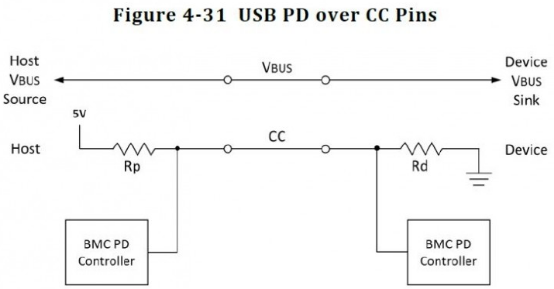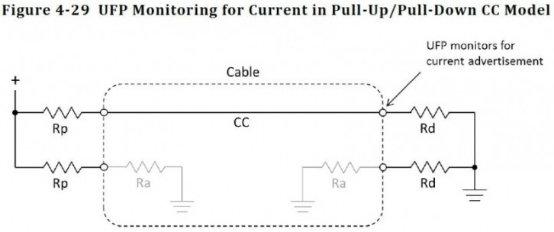What is the difference between USB C and USB 3.1?
The arrival of the USB Type-C interface and the USB 3.1 standard should provide consumers with more convenience. However, at present, it seems that these new standards not only provide consumers with a better user experience, but also bring a lot of hidden dangers. Google engineer Benson Leung recently discovered that many USB-C cables on the market do not fully comply with the latest USB specifications.
First of all, we should be clear that although USB-C and USB 3.1 often appear together in some websites or product introductions, USB-C is not equivalent to USB 3.1. USB 3.1 is an industry standard initiated by major companies such as Intel. The biggest feature of USB 3.1 is that the data transmission is extremely fast, theoretically the speed can reach 10Gbps. The USB Type-C is a connector specification, consisting of a Type-C plug and a Type-C socket.
In the latest USB 3.1 standard, there are three interface styles, one is Type-A (that is, Standard-A, the most common USB interface style on traditional computers), and one is Type-B (both Micro-B, the current mainstream Android smart The interface style used by mobile phones), the other is Type-C (that is, the newly designed interface style mentioned above).
Then we should be easy to understand. Although USB Type-C is designed based on USB 3.1, this does not mean that devices using this connection method must all support the USB 3.1 standard; contrary to what we think is, for older The old USB 3.0 Type-A interface devices are compatible with the USB 3.1 standard.
So why do some devices use a USB Type-C interface that is not compatible with the USB 3.1 standard? What's the point of doing this? That's right, it's just for convenience-because the USB-C interface is the same as Apple's Lightning interface, there is no front and back, just plug it in. It's comfortable and enjoyable enough. It is also worth mentioning that each update of the USB standard will not only bring about the acceleration of data transmission speed, but also have the enhancement of scalability, the acceleration of current transmission rate and other internal technology updates.
Since the original USB standard did not have the power supply capability, the power supply of USB 1.0 and 2.0 was only 2.5w (0.5A / 5v). Although this is sufficient to power small electronic devices such as mobile phones, it is obviously not enough for devices such as mobile hard drives. And even for charging mobile phones, 2.5w is not so plentiful now. USB 3.0 came into being, and its power supply can reach 4.5w (0.9a / 5v). The USB-Type C 1.1 specification also has its own power supply operating mode, under which the USB-Type C interface can be used for fast charging.
As part of the power supply standard, the new power management system introduces the level of power required to adopt the new bidirectional data channel. This is to ensure its compatibility with traditional equipment and reduce equipment damage caused by non-compliant data lines. The main difference between USB 3.0 and 3.1 is: 3.1 supports up to twice the peak data transfer rate of 3.0. Most devices are likely to jump directly to 3.1, and the task of developers is to ensure that their devices can support these two latest standards, while ensuring the backward compatibility of their devices.
However, when it comes to the transmission rate, we must look at it as a whole, because this is the same as the law of the barrel, and any part of it that does not meet the standard will directly affect the final rate. For example, plugging a USB 3.1 device into a USB 2.0 interface will limit the transmission rate to 480 Mbps. In practical applications, hardware will also severely restrict your transfer rate, such as the hard disk itself.
So we can simply understand that: USB-C refers to the two-way connection type, and the version number like "3.1" refers to the data transmission speed and other specifications, such as the interface or data cable specifications. However, neither of these two strictly defines the USB power supply specification or the peak current specification, and the compatibility of the device or data line is not emphasized.
Therefore, this has created many potential hidden dangers, and this uncertain expression is very dangerous. And part of the reason is that these people are trying to promote new technologies on the basis of being compatible with old equipment when setting standards. I hope this table can help manufacturers understand the different versions of power supply standards in detail and produce products that meet industry standards. And this is not only responsible for its products, but also for users.
Well, if you continue to read this article patiently, we can start to talk about some things that are relevant to our standards and related to our lives. Let's expose some things about data cables and connectors.

For those devices that use USB to supply power, the current is achieved through the CC pin of the connector, which is described in detail in the new 2.0 standard. The current exchange between the charger and the device can provide up to 100W of power. In the most extreme cases, the current can reach up to 5A / 20V. This mode is most likely to be used by laptops or other devices that consume more power because it can support higher voltage modes.
Then the point is coming. In the connector, the signal exchange between the microcontrollers can provide the correct voltage and current settings as needed, and if there is no signal exchange between these microcontrollers, it means that these high power modes will not be activated, but still Can match all low-power modes. This means that if it is only used at a lower power, such as only as a data line for smart phones and other devices, these additional technical costs can be removed.
For basic USB-C versions 1.0 and 1.1, 5V devices can provide up to 3A without using USB PD. Compared with them, the current voltage through the CC pin is increased to 5V, and this value will be continuously monitored after the power is turned on to determine that the current meets the required output power of the device. The magnitude of the current is controlled by the pull-up resistor Rp, which can be used to set the current to a specific value, such as 0.9A, 1.5A, or 3A.

For the USB-C to USB-C connection, because the ports are built in the same standard, these higher current modes are affordable, and this is what we often say about the fast charging function. However, recently there have been a lot of problems about the traditional adapter data cable. The main reason for these problems is that these people plugged a new type of mobile phone or laptop with USB-Type-C into a Type-A type. PC port or charger.
We are not worried about the charging speed caused by this, but the current transmission power between devices. Since the USB Type-C standard clearly stipulates that it can provide higher power current transmission but is not compatible with old Type-B or other standard connectors at high power, in fact, manufacturers of data cables should use CC connectors and Rp resistor to ensure that the device will not try to get too much power from the old charger or the device that the adapter itself cannot withstand.
I hope everyone can understand USB Type C and USB3.1 after reading it. USB 3.1 provides a very fast data transfer speed, but in fact, only when the connected data cable and the devices at both ends of the data cable meet the 3.1 standard can they really take advantage of its speed. Keep in mind that although they must all comply with the 3.1 standard, this does not mean that they must support USB Type C connectors.
The core reason for this problem is that there is currently no simple way to see whether there is a resistor in the data line that the consumer wants to buy and whether the resistor is set correctly. However, we can be sure that it is the safest way to only use the data cable that is included with the purchase of the device or directly sold by the manufacturer of the device, but please remember that the data cable of the device may not be compatible with other The device is compatible.
Unfortunately, most of the data cables sold do not have detailed parameter descriptions for reference, and this is very likely to be misleading. However, we can try to find the description of the USB-IF certification on the manufacturer's official product page or packaging. USB-IF is a non-profit organization that specializes in testing whether data cables comply with standards. Although not every manufacturer will go to them for certification, the certification standard can be used as a benchmark for the safety and reliability of data lines.
If you want to know more, our website has product specifications for interface, you can go to ALLICDATA ELECTRONICS LIMITED to get more information

